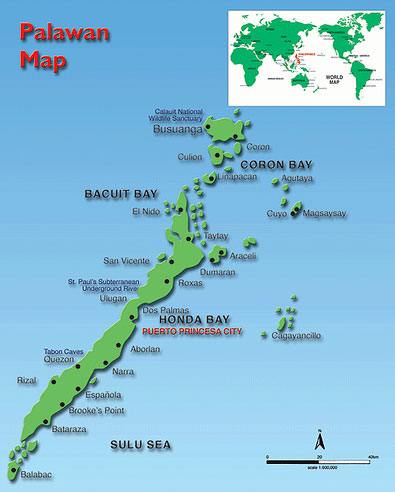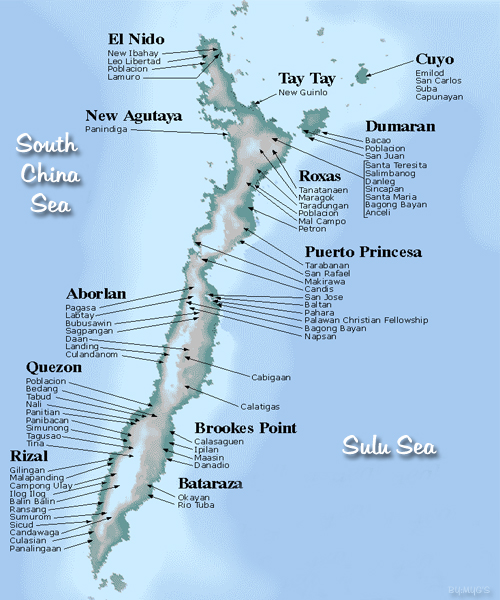
-
МјРЇСІИёСЖШИМі
-
 И№ОЫ КИОЫ Йъ ЗЛЦЎЧЯБт~ ИЎСЖЦЎ ПЙОрБюСі
И№ОЫ КИОЫ Йъ ЗЛЦЎЧЯБт~ ИЎСЖЦЎ ПЙОрБюСі 88,639
88,639 -
 [ЧЪИЎЧЩ ММКЮ] ФЋИ№ХзНК ПЉЧр 100Йш СёБтБт
[ЧЪИЎЧЩ ММКЮ] ФЋИ№ХзНК ПЉЧр 100Йш СёБтБт 43,077
43,077 -
 ИЖДвЖѓ НУГЛ - ИЎРп АјПјСЄКИ. (ЛчСј 16Рх ЦїЧд)
ИЖДвЖѓ НУГЛ - ИЎРп АјПјСЄКИ. (ЛчСј 16Рх ЦїЧд) 30,328
30,328 -
 ММКЮРЧ СіПЊСЄКИ15,264
ММКЮРЧ СіПЊСЄКИ15,264 -
 ИЖДвЖѓ БйБГ - ЕћАЁРЬЕћРЬ ПЉЧр СЄКИ13,885
ИЖДвЖѓ БйБГ - ЕћАЁРЬЕћРЬ ПЉЧр СЄКИ13,885 -
 [ЧЪИЎЧЩ ММКЮ/ИЗХК] ШЃХк МїЙк ПфБн Йз СЄКИ12,930
[ЧЪИЎЧЩ ММКЮ/ИЗХК] ШЃХк МїЙк ПфБн Йз СЄКИ12,930 -
 КИЖѓФЋРЬРЧ И№Еч И№НРРЛ КММі РжДТ ЛчСјУИ.12,747
КИЖѓФЋРЬРЧ И№Еч И№НРРЛ КММі РжДТ ЛчСјУИ.12,747 -
 ИЖДвЖѓ БйБГ - ЦХЛѓЧб ЦјЦї ПЉЧрСЄКИ12,432
ИЖДвЖѓ БйБГ - ЦХЛѓЧб ЦјЦї ПЉЧрСЄКИ12,432 -
 [ММКЮ-ЙшМБТјРх] МБЙкШИЛч РќШЙјШЃПЁПф~11,961
[ММКЮ-ЙшМБТјРх] МБЙкШИЛч РќШЙјШЃПЁПф~11,961 -
 ИЖДвЖѓ СіПЊ(ПЁИЃЙЬХИ -ИЛЖѓХз)РЧ СіЕЕ/ЧбБЙ РННФСЁ/МюЧЮИє11,736
ИЖДвЖѓ СіПЊ(ПЁИЃЙЬХИ -ИЛЖѓХз)РЧ СіЕЕ/ЧбБЙ РННФСЁ/МюЧЮИє11,736
Palawan

Palawan (Tagalog pronunciation: [pɐ'lawan]) or officially Tagalog: Lalawigan ng Palawan, is an island province of the Philippines located in the MIMAROPA region or Region 4. Its capital is Puerto Princesa City, and it is the largest province in the country in terms of total area of jurisdiction. The islands of Palawan stretch from Mindoro in the northeast to Borneo in the southwest. It lies between the South China Sea and the Sulu Sea. The province is named after its largest island, Palawan Islandmeasuring 450 kilometres (280 mi) long, and 50 kilometres (31 mi) wide.
Geography
Palawan is composed of the long and narrow Palawan Island, plus a number of other smaller islands surrounding the main island. The Calamianes Group of Islands, to the northeast consists of Busuanga Island, Culion Island, and Coron Island. Durangan Island almost touches the westernmost part of Palawan Island, while Balabac Island is located off the southern tip, separated from Borneo by the Balabac Strait. In addition, Palawan covers the Cuyo Islands in the Sulu Sea. The disputed Spratly Islands, located a few hundred kilometres to the west, are considered part of Palawan by the Philippines, and is locally called the Kalayaan Group of Islands.
Palawan's almost 2,000 kilometres (1,200 mi) of irregular coastline are dotted with roughly 1,780 islands and islets, rocky coves, and sugar-white sandy beaches. It also harbors a vast stretch of virgin forests that carpet its chain of mountain ranges. The mountain heights average 3,500 feet (1,100 m) in altitude, with the highest peak rising to 6,843 feet (2,086 m) at Mount Mantalingahan. The vast mountain areas are the source of valuable timber. The terrain is a mix of coastal plain, craggy foothills, valley deltas, and heavy forest interspersed with riverine arteries that serve as irrigation.
History
The history of Palawan may be traced back 22,000 years ago, as confirmed by the discovery of bone fragments of the Tabon Man in the municipality of Quezon. Although the origin of the cave dwellers is not yet established, anthropologists believe they came from Borneo. Known as the Cradle of Philippine Civilization, the Tabon Caves consist of a series of chambers where scholars and anthropologists discovered the remains of the Tabon Man along with his tools and a number of artifacts.

People and culture
Based on the 2010 census, the population of the province excluding the independent Puerto Princesa City is 771,667 persons, or 994,340 including Puerto Princesa. Population trend:
- Population in 2010: 771,667
- Population in 2007: 682,152
- Population in 2000: 593,500
- Population in 1995: 510,909
- Population in 1990: 436,140
The province is a melting pot of 87 different cultural groups and races who live together in peace and harmony. Basically, its culture bears a strong influence from China, India and the Middle East. Influx of migrants from other parts of the Philippines, particularly from Muslim Mindanao, accounts for the high population growth rate of 3.98% annually. The native-born Palaweños still predominate the populace. Eighteen percent is composed of cultural minority groups such as the Tagbanwa, Palawano, Batak, and Molbog.
Language
There are 52 languages and dialects in the province, with Tagalog being spoken by more than 50 percent of the people. Other languages are Cuyonon (26.27 percent), Palawano (4.0 percent), and Hiligaynon (9.6 percent).
Religion
Roman Catholicism
The predominant religion in Palawan is Roman Catholicism. However, although there are a lot of Roman Catholic parishes in Puerto Princesa City, the number of Catholic Faithfuls are still scarce for it to be considered as a full-fledged Diocese. Some of the Religious Orders that had a significant mission in the Islands is the Order of Augustinian Recollects.
Protestantism and Other Groups
Several Baptist and other Protestant denominations have a strong presence on Palawan as do the Church of the Foursquare Gospel in the Philippines, and the Seventh-day Adventists. Charismatic groups such as Jesus is Lord (JIL) and the Life Church (formerly known at the Life Renewal Center).
Other Christian denominations including The Church of Jesus Christ of Latter-day Saints, the Members Church of God International, the indigenous Iglesia ni Cristo, the United Church of Christ in the Philippines (UCCP), the Jesus Miracle Crusade, as well as the Iglesia Filipina Independiente (Philippine Independent Church or Aglipayan Church) which is standing as one diocese (The Diocese of Palawan).
Non-Christian religions
Because of its proximity to Mindanao and even Malaysia, pockets of indigenous Muslims can be found in the southern municipalities with Muslims making up the majority of the population in some municipalities in the far south like Balabac and Bataraza. There are also Buddhists - mainly Vietnamese refugees who settled in Palawan, as well as some ethnic Chinese Buddhists. One notable Vietnamese Buddhist Temple in Palawan is Vihara Van Phat.
Most of the ethnic minorities such as Batak and Tagbanwa are animists, but many have become Christians (usually Protestant) or have joined other sects.

Notable sites
Boayan Island
Calauit Game Preserve and Wildlife Sanctuary
A game reserve and wildlife sanctuary of exotic African animals and endangered endemic animals of Palawan. The reserve was established on August 31, 1976 by virtue of the Presidential Decree No.1578, this was initiated in response to the appeal of the International Union for the Conservation of Nature to help save African wildlife when former President Ferdinand Marcos attended the 3rd World Conference in Kenya. By virtue of the Republic Act 7611 (SEP), administrative jurisdiction of DENR was given to the local government of Palawan, effective December 31, 1993. Management of the area is the responsibility of the Office of the Palawan Council of Sustainable Development (PCSD). It is located in Calauit Island in Busuanga.
Seven lakes surrounded by craggy limestone cliffs attract hundreds of nature lovers to Coron Reefs in Northern Palawan, near the town of Coron. Busuanga Island, whose main town is Coron, is the jump-off point for numerous dive operators. The principal dive sites are 12 World War II Japanese shipwrecks sunk on September 24, 1944 by US Navy action. They range in depth from the surface to 40 meters. This large variety offers exciting wreck exploration for enthusiasts, from novice divers and snorkelers and recreational divers to experienced TEC divers. The aquatic views from the sunken Japanese warships off Coron Island are listed in Forbes Traveler Magazine's top 10 best scuba sites in the world.
Dive operators offer PADI dive courses ranging from Discover Scuba to Assistant Instructor, Technical and Enriched Air Diving, as well as other specialty courses. Dive operators offer day diving, snorkeling trips, and overnight dive safaris. Live-aboard and charter boats also offer diving in the area.
El Nido Marine Reserve Park
The January 2008 issue of international magazine Travel + Leisure, published by the American Express Co. (which partnered with Conservation International) listed El Nido's sister hotel resorts El Nido Lagen Island and El Nido Miniloc Island in Miniloc and Lagen Islands as "conservation-minded places on a mission to protect the local environment." Travel + Leisures 20 Favorite Green Hotels scored El Nido Resort's protection of Palawan's giant clam gardens and the re-introduction of endangered Philippine cockatoos: "8. El Nido Resorts, Philippines: Guest cottages on stilts are set above the crystalline ocean. The resorts are active in both reef and island conservation."
Malampaya Sound Land and Seascape Protected Area
Located in the Municipality of Taytay, this important ecological and economic zone is a watershed and fishing ground, and the habitat of Bottle-nosed and Irrawaddy dolphins.
UNESCO World Heritage Sites
Puerto-Princesa Subterranean River National Park (1999)
This park features a large limestone karst landscape with an underground river. One of the river's distinguishing features is that it emerges directly into the sea, and its lower portion is subject to tidal influences. The area also represents a significant habitat for biodiversity conservation. The site contains a full 'mountain-to-sea' ecosystem and has some of the most important forests in Asia.
Tubbataha Reef Marine Park (1993)
The Tubbataha Reef Marine Park covers 332 kmТВ, including the North and South Reefs. It is a unique example of an atoll reef with a very high density of marine species; the North Islet serving as a nesting site for birds and marine turtles. The site is an excellent example of a pristine coral reef with a spectacular 100 m perpendicular wall, extensive lagoons and two coral islands.
Ursula Island
This game refuge and bird sanctuary is situated near the Municipality of Brooke's Point in southern Palawan. The islet is a migratory and wintering ground for shorebirds and seabirds.
- ЁЄryWvMVxeet
- ЁЄryWvMVxeet
- ЁЄryWvMVxeet\'\"\\(
- ЁЄryWvMVxeetщ\'\"\\(
- ЁЄryWvMVxeet
- ЁЄryWvMVxeet
- ЁЄryWvMVxeet
- ЁЄryWvMVxeet
- ЁЄryWvMVxeet
- ЁЄryWvMVxeet
- ЁЄryWvMVxeet
- ЁЄryWvMVxeet
- ЁЄryWvMVxeet
- ЁЄryWvMVxeet
- ЁЄryWvMVxeet














 ЧЪРкДхФФ ОпАЃЛѓДу ПРЧТ
ЧЪРкДхФФ ОпАЃЛѓДу ПРЧТ 11ГтПЌМг МвКёРкИИСЗ 1РЇ
11ГтПЌМг МвКёРкИИСЗ 1РЇ
 ГЛАд ИТДТ ОюЧаПј УЃБт
ГЛАд ИТДТ ОюЧаПј УЃБт
 ИЎОѓ ЧаБГ ЙцЙЎБт
ИЎОѓ ЧаБГ ЙцЙЎБт
 СжИЛПЁ ГЛАЁ ОЕ КёПыРК?
СжИЛПЁ ГЛАЁ ОЕ КёПыРК? УжАэАЁМККё РЬКЅЦЎ СёБтБт
УжАэАЁМККё РЬКЅЦЎ СёБтБт
 ЧіСіПЁМЕЕ ЧЪРкДхФФ!
ЧіСіПЁМЕЕ ЧЪРкДхФФ! ЧіСіПЁМ АЁДЩЧб
ЧіСіПЁМ АЁДЩЧб









 ЧЪРк ЦЏБо Ч§ХУ! ФСНУОюСі МКёНК
ЧЪРк ЦЏБо Ч§ХУ! ФСНУОюСі МКёНК



 АЁСЗПЌМіЗЮ ДйЧдАд ОзЦМКёЦМ
АЁСЗПЌМіЗЮ ДйЧдАд ОзЦМКёЦМ





























